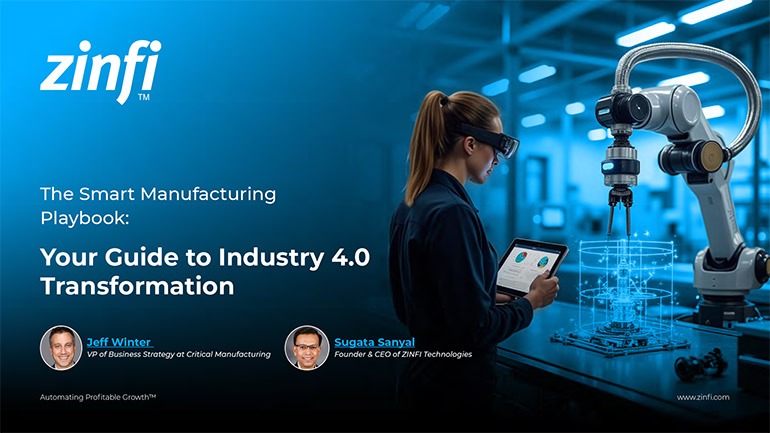Glossary - What is - System Integration
What is System Integration?
System integration refers to linking various computing systems and software applications physically or functionally to act as a coordinated whole. This involves ensuring that different subsystems and components work together seamlessly to enhance overall productivity and efficiency in an enterprise setting. System integration can include hardware and software integration, which combines existing, often disparate, systems to work together within an organization.
In the context of partner ecosystem management and partner management automation, system integration plays a crucial role. It enables the seamless exchange of data and workflows between various partners, enhancing collaboration and operational efficiency. This integration ensures that different tools and platforms used by partners are synchronized, reducing redundancy, minimizing errors, and improving the overall management of partnerships.
Key Takeaways:
- Enhanced Collaboration and Efficiency: System integration improves partner collaboration by enabling seamless data exchange and workflow synchronization. This ensures all parties have real-time access to relevant information, leading to more informed decision-making and streamlined operations. For example, ZINFI’s partner management solutions provide comprehensive integration capabilities, allowing smooth interaction between CRM, ERP, and marketing automation systems and enhancing overall partner collaboration and efficiency.
- Improved Data Accuracy and Consistency: By integrating disparate systems, organizations can ensure data accuracy and consistency across all platforms. This reduces the risk of errors and data discrepancies, which can lead to operational inefficiencies and poor decision-making. ZINFI’s Unified Partner Management (UPM) platform offers robust integration features that maintain data integrity across all partner activities and touchpoints.
- Cost Savings and Resource Optimization: Effective system integration can lead to significant cost savings by optimizing resource utilization and eliminating the need for redundant systems. Organizations can reduce manual efforts and focus on strategic initiatives by automating and integrating processes. ZINFI’s automation tools help partners automate repetitive tasks, allowing for better resource allocation and cost efficiency.
- Scalability and Flexibility: Integrated systems offer greater scalability and flexibility, allowing organizations to adapt quickly to changing business needs and market conditions. This is particularly important for growing businesses that need to scale their operations without compromising efficiency. ZINFI’s platform supports scalable integration, enabling companies to expand their partner networks and capabilities seamlessly.
- Enhanced Customer Experience: With integrated systems, organizations can provide a better customer experience by ensuring that all customer-facing processes are efficient and cohesive. This includes faster response times, personalized interactions, and consistent service delivery. ZINFI’s customer relationship management solutions integrate with partner management systems to enhance the overall customer experience.
Summary of Key Takeaways:
System integration is pivotal for enhancing collaboration, ensuring data accuracy, achieving cost savings, and providing scalability within partner ecosystems. ZINFI’s comprehensive integration solutions enable organizations to synchronize their systems and workflows, improving efficiency and customer experience. These benefits underscore the importance of integrating disparate systems to create a cohesive and productive partner management environment.
Key Examples:
- Automotive Manufacturing: In the automotive industry, system integration allows manufacturers to streamline their supply chain management by linking suppliers, production lines, and distribution networks. This integration ensures that parts and materials are available quickly, reducing inventory costs and improving production efficiency. For instance, a car manufacturer can integrate its ERP system with suppliers’ systems to automate order placements and track shipments in real time.
- Consumer Electronics: Electronics companies use system integration to synchronize their design, manufacturing, and sales processes. This integration enables faster product development cycles and efficient inventory management across different sales channels. For example, a smartphone manufacturer can integrate its design software with production systems to quickly adapt to market trends and customer feedback.
- Energy Production: In the energy sector, system integration connects various operational systems, such as generation, transmission, and distribution networks, to ensure efficient energy management. This integration helps in real-time monitoring and control of energy flows, leading to optimized energy production and distribution. For example, a renewable energy company can integrate its solar power plants with the grid management system to balance supply and demand effectively.
- Financial Services: Financial institutions rely on system integration to provide a seamless customer experience by linking their banking, investment, and insurance services. This integration enables real-time data sharing and streamlined processes, enhancing customer satisfaction and operational efficiency. For instance, a bank can integrate its CRM system with online banking platforms to offer personalized services based on customer transaction history.
- Food and Beverage: System integration in the food and beverage industry connects production, quality control, and distribution systems to ensure product quality and regulatory compliance. This integration helps track and manage the entire supply chain, from raw materials to finished products. For example, a food processing company can integrate its quality control systems with production lines to detect and address real-time issues.
- Healthcare Services: Healthcare providers use system integration to link patient records, billing, and clinical management systems. This integration ensures accurate and timely access to patient information, improving the quality of care and operational efficiency. For instance, a hospital can integrate its Electronic Health Records (EHR) with lab systems to provide clinicians with immediate access to test results.
- Information Technology: In the IT sector, system integration is essential for managing complex IT environments, including cloud services, on-premises systems, and various applications. This integration ensures seamless operation and efficient resource utilization. For example, an IT service provider can integrate network monitoring tools with ticketing systems to automate issue detection and resolution.
- Pharmaceutical Development: Pharmaceutical companies use system integration to connect research, development, and manufacturing processes. This integration accelerates drug development cycles and ensures compliance with regulatory requirements. For example, a pharmaceutical company can integrate its Laboratory Information Management System (LIMS) with production systems to streamline the transfer of research findings to manufacturing.
- Retail Industry: Retailers integrate Point-of-Sale (POS) systems, inventory management, and e-commerce platforms to provide a unified shopping experience. This integration helps manage inventory levels, track sales, and improve customer satisfaction. For example, a retail chain can integrate its POS system with online and offline inventory systems to ensure product availability across all channels.
- Telecommunications: Telecommunications companies integrate network management, customer service, and billing systems to enhance service delivery and customer satisfaction. This integration allows real-time monitoring and management of network performance and customer interactions. For example, a telecom provider can integrate its CRM system with network monitoring tools to proactively address customer issues.
Conclusion:
System integration is critical in modern business environments, facilitating seamless interaction between various systems and enhancing overall operational efficiency. Enabling the synchronization of disparate systems enhances collaboration, ensures data accuracy, achieves cost savings, and provides scalability and flexibility. In partner ecosystem management and partner management automation, system integration is vital for creating a cohesive environment where all partners can efficiently collaborate and manage their workflows.
ZINFI’s comprehensive suite of integration solutions underscores the importance of system integration in various industries. From automotive manufacturing to telecommunications, integrated systems ensure streamlined operations, improved customer experiences, and optimized resource utilization. The examples illustrate how different sectors benefit from system integration, highlighting its relevance and application across diverse industries.
For businesses looking to enhance their partner management strategies, system integration offers a pathway to improved efficiency, better data management, and superior customer service. ZINFI’s platform provides robust integration capabilities that support these objectives, enabling organizations to scale their operations and maintain a competitive edge.
Associated Keywords:
- System Integration Benefits
- Partner Ecosystem Management
- Integration Solutions
















